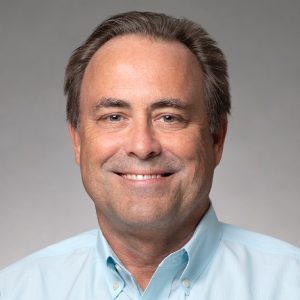Nov 4, 2019
Experts reach out to offer help as feds report suicide spike
The number of children, adolescents and young adults committing suicide accelerated at a tragic rate in the last decade according to data released by the government this month and is now the second leading cause of death for those between the ages of 10 and 24, behind accidents and ahead of homicide.
From 2007 to 2017, the rate of suicide among Americans aged 10 to 24 increased a staggering 56% up from 6.8 deaths per 100,000 people to 10.6 deaths per 100,000, according to the Centers for Disease Control’s National Center for Health Statistics. The report notes that the pace of increase for suicide was almost double from 2013 to 2017 (7% annually, on average) than from 2007 to 2013 (3% annually).
A mysterious and tragic trend
“Everything I hear from young people and parents indicates that there are more cases of suicide than they can ever remember,” said Dr. Dan Reidenberg, Executive Director of Suicide Awareness Voices of Education, or SAVE, an organization dedicated to preventing suicide through public awareness and education, reducing stigma and serving as a resource to those touched by suicide.
“I don’t think anybody really knows what’s behind this increase,” said Reidenberg, who is also managing director of the National Council for Suicide Prevention. “It’s likely a combination of different issues – the recession, the lack of access to appropriate medication, the rise of social media and violence in entertainment.”
Dr. Ken Duckworth, medical director for Blue Cross Blue Shield of Massachusetts agrees the reasons people take their lives are elusive, but notes the increase documented in the CDC report coincides with the explosive rise in social media use.
“While social media may provide a new way for those who feel isolated to engage with others, the anonymity of those interactions can also create more opportunity for humiliation and bullying,” he said “Because there is not a personal face-to-face relationship, we know people are less kind when interacting online.”

Dr. Ken Duckworth
Social media offers no support to depressed young people, noted SAVE’s Dr. Reidenberg.
“Depression is on the rise among the young, and they don’t have the coping mechanisms older adults do,” he said. “In fact, when the young become depressed, they tend to pull away from the only support system they have - their peers.”
If you or someone you know is having suicidal thoughts, the National Suicide Prevention Lifeline can provide immediate help
Call: 1-800-273-8255 (TALK)
Click: NSPL Online Chat Services
Text: “HOME” to 741-741
Unintended consequences from a medication warning?
Duckworth also noted that in 2004, the Food and Drug Administration required a “black box” warning to be added to package inserts for selective serotonin reuptake inhibitors or SSRIs, which treat depression by increasing the level of serotonin in the brain. The warning stated the medications were associated with an increased risk of suicidal thinking, feeling, and behavior in young people.
The warning was intended to promote the monitoring of patients who initiate antidepressants, but may have had unintended consequences: a decline in the prescribing of antidepressants for young people.
“Several studies found that following the warning there was a significant drop in the use of SSRIs and an increase in suicide,” Duckworth said.
One study published in the BMJ in 2014 found that in the second year after the warnings, relative changes in antidepressant use fell 31% among adolescents, and 24.3% among young adults and there was a simultaneous increase in suicide attempts up almost 22% among adolescents and an almost 34% increase in attempts among young adults.
The black box information, Duckworth said, not only warns of a potential link between the medication and suicidal thoughts, it also urges physicians to closely monitor their patients for changes in behavior, suicidal thoughts or worsening symptoms.
“One way to closely monitor a patient who is depressed or has thoughts of suicide is through counseling,” said Duckworth. “Medication be helpful, but people with mental health conditions need to be able to talk through their issues with a trained therapist. Access to mental health services is an issue across our country that needs to be addressed.”
SAVE’s 6 ways to prevent suicide

1. Have meaningful social connections
Social connections help us live longer happier lives. The number of connections we have isn’t as important as how connected we feel to someone else.
2. Know the warning signs, including:
• Talking about wanting to die or to kill oneself
• Talking about feeling hopeless or having no purpose
• Talking about feeling trapped or being in unbearable pain
• Talking about being a burden to others
• Increased use of alcohol or drugs
• Acting anxious, agitated, or reckless
• Sleeping too little or too much
• Withdrawing or feeling isolated
• Showing rage or talking about seeking revenge
• Displaying extreme mood swings
3. Determine if you or a loved has a mental illness
Detecting the symptoms of mental illness early and finding the right treatment options for substance misuse or mental illness can help most people return to living well.
4. Reduce access to lethal means of suicide
Including firearms and medications with the potential for causing an overdose.
5. Seek help
If you’re worried about your, or someone else’s, suicidal thoughts or feelings there are there are many support options available, including:
• National Suicide Prevention Lifeline
1-800-273-8255 (TALK)
• Samaritans HELPLINE: (877) 870-4673
6. Get Involved with SAVE
Everyone has a role to play in preventing suicide. Attend or organize a fundraiser or event or join or start a SAVE charter. Learn how.

